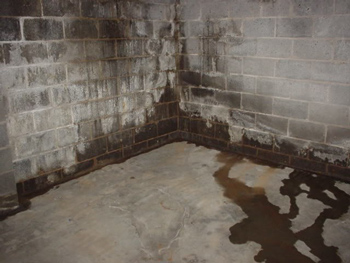Considering purchasing a home?
There are a few simple issues you can inspect for yourself before bringing in your inspector for the full evaluation. They can often give you and your clients an idea of the state of overall maintenance of the house you are selling or considering purchasing. Then again, some are just fun to do.
1. Roof: Checking the roof for need of replacement can vary from the  extreme to the minor – here’s how to know when and how to tell the difference. Roofs in need of replacement will curl, have discoloured, broken, or missing pieces and might seem dirty or show moss growth. In warmer temps, water should shed off a roof following a storm, so any area that looks wet or that holds water indicated that the roof needs work right away.
extreme to the minor – here’s how to know when and how to tell the difference. Roofs in need of replacement will curl, have discoloured, broken, or missing pieces and might seem dirty or show moss growth. In warmer temps, water should shed off a roof following a storm, so any area that looks wet or that holds water indicated that the roof needs work right away.
2. Structure: Stand across the street from the house, does it look straight? Has the building shifted or does is it leaning at all?
3. Appliances: Dishwasher – Look in the cabinet under the sink and at the ceiling in the basement below the dishwasher for any water or damp/water stains. Either indicate a leak that needs to be looked at.
 Fridge – Take a bill (any denomination will do) and close the fridge door on it as you hold it. Now pull gently on the bill. You should feel some resistance. If not, you are losing valuable cold air from the fridge and a new magnetic sealing strip is recommended.
Fridge – Take a bill (any denomination will do) and close the fridge door on it as you hold it. Now pull gently on the bill. You should feel some resistance. If not, you are losing valuable cold air from the fridge and a new magnetic sealing strip is recommended.
4. Electrical System: Is the wiring overhead sourced? If so, are the wires clear of obstructions and is the entry mast metal and in good condition? Is the meter and panel at least 100 amps? If not, you may need expensive upgrades.
5. Heating System: Is there a central system and what is the distribution network? If the house relies on electric or oil heat, there is a good chance you cannot install air conditioning easily.
6. Grading: Check all areas of the property for a slope towards the house. Note any grates or alternate water management systems as this may be an indication of ongoing problems.
 7. Landscaping: Look for trees and gardens that come right up to the house or overhang the siding materials or roof. These will decrease the lifespan of the finishing materials. These trees will also allow raccoons and squirrels easy access to your roof and potentially the attic.
7. Landscaping: Look for trees and gardens that come right up to the house or overhang the siding materials or roof. These will decrease the lifespan of the finishing materials. These trees will also allow raccoons and squirrels easy access to your roof and potentially the attic.
8. Siding: With stucco siding, look for cracks, dents and other damage. With bricks, look for any cracks and the condition of the mortar. Overall, note any peeling paint, rust, mold, or other damage.
9. Breathe: Taking a deep breath when you walk in the door of the house can tell you a lot. Does it smell earthy, musty, damp or fresh? Trust the first breath in the door and you will know what to look for.
 Please note these items are simply a launching pad to get an idea of the homes you are viewing in your process, they will not indicate if you are paying fair market value for the house, only your Realtor can determine this information.
Please note these items are simply a launching pad to get an idea of the homes you are viewing in your process, they will not indicate if you are paying fair market value for the house, only your Realtor can determine this information.
Your inspector will be able to make better recommendations and offer potential solutions to these issues and questions, as well he/she will evaluate a much more extensive list of items.

